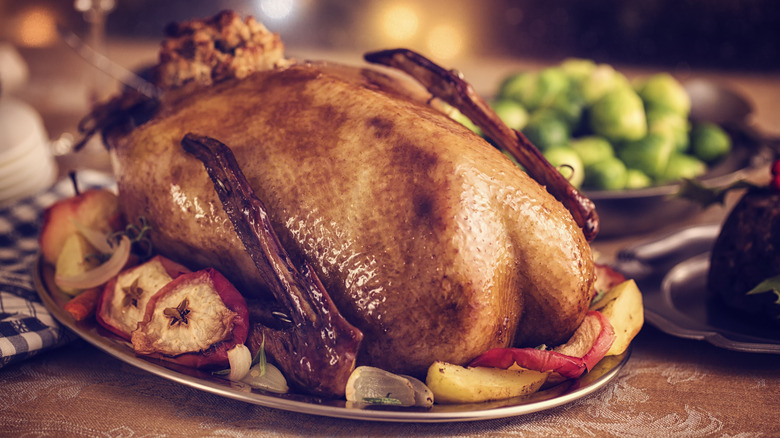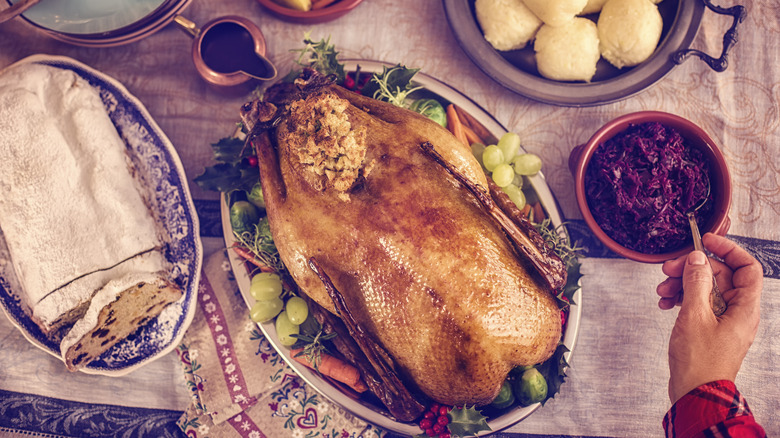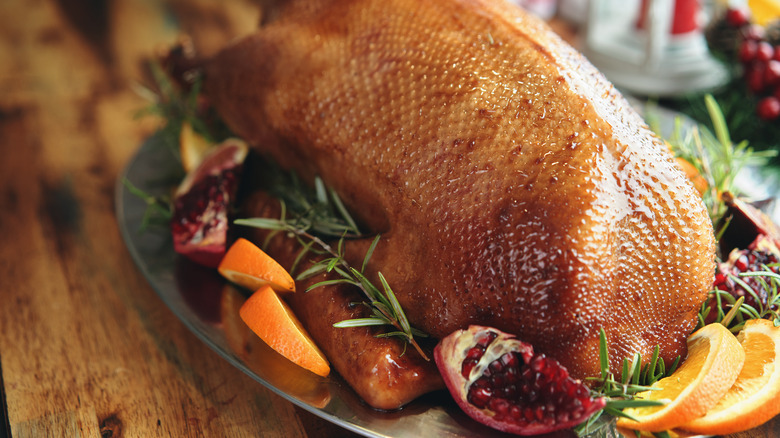What Temperature Do You Need To Cook Goose Meat To Eat It Safely?
Your goose is cooked — or is it? Goose may sound like an unusual protein at the dinner table, but this bird has long been a staple of holiday feasts, especially in Europe. It's a large, hearty bird with a richer, gamier flavor than chicken or turkey, and it roasts up beautifully for a Christmas goose dinner.
Cooking a large bird like a goose may seem daunting, but it's no more of a challenge than the average Thanksgiving turkey. Most go for an oven roast for goose preparation, as this is the most traditional way to prepare the dish, though seasonings and cook times may vary. Goose meat falls under the same food safety guidelines as other poultry; cooking the meat to 165 to 170 degrees Fahrenheit is the key, resulting in a safe-to-eat and tender bird.
While you can serve goose medium-rare (about 140-150 degrees Fahrenheit), much the same as other game birds like duck, this comes at possible risk of foodborne illness such as salmonella — so prepare and consume with caution.
Buying and cooking your goose
Though you won't find goose at every U.S. grocery store, specialty stores will stock the bird, especially around the holidays. Or, you could always visit your local butcher; independent butchers often stock meats and cuts that a chain grocery store might not.
Goose at the grocery store will likely be labeled "whole young goose." Young geese are in the age range between goslings and "mature" geese, usually around 6 to 8 months. They tend to weigh in the range of 8 to 12 pounds. When selecting your goose and deciding how large of a bird to buy, be sure to account for how many guests will be at your table. Estimate about 1 ½ to 2 pounds of meat for each guest.
For a 8 to 12 pound bird, cook time will likely take about 2 to 3 hours. Stuffing your bird will increase the cook time, so plan accordingly.
Thawing a whole goose for cooking
Often, whole geese will come frozen, so thawing is necessary to prepare the bird for cooking. Safely thawing a large bird like a goose takes time, so be sure to begin preparations well in advance of the day you'll need to cook the bird.
The best way to defrost a goose is simply in the refrigerator; however, a whole goose may take up to two days to fully defrost, so if you need that bird in a pinch, you'll need to go a different route. Cold water works as a thawing method that will only take a few hours. Submerge the goose in cold water in its packaging (or put it in an airtight bag) and change out the water every half hour.
In a pinch, you can thaw the meat in the microwave, but this method is only recommended if you'll be immediately cooking the goose after thawing. The microwave will partially cook the goose, which can lead to bacteria growth if the bird is left out for too long.


